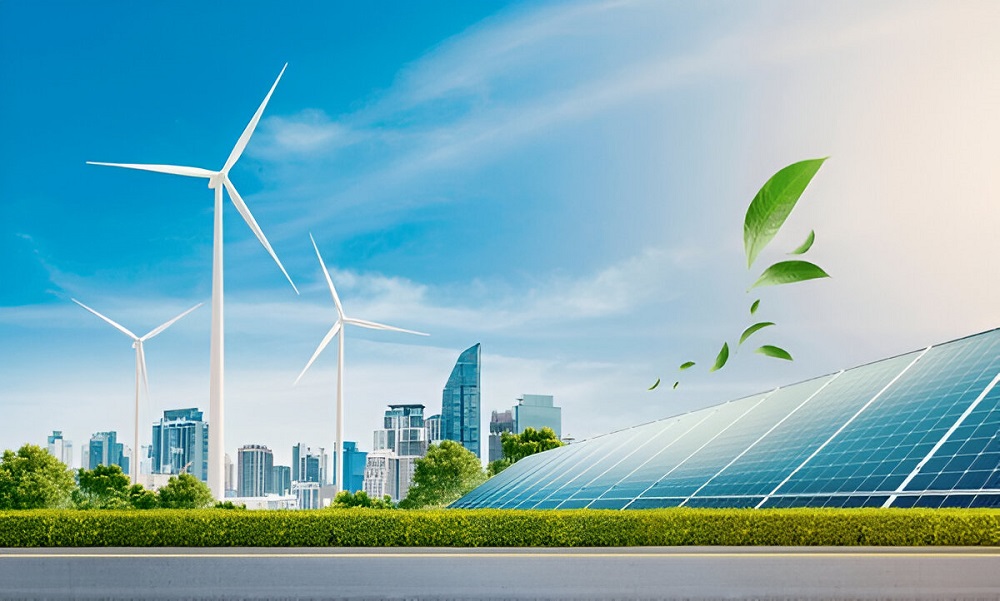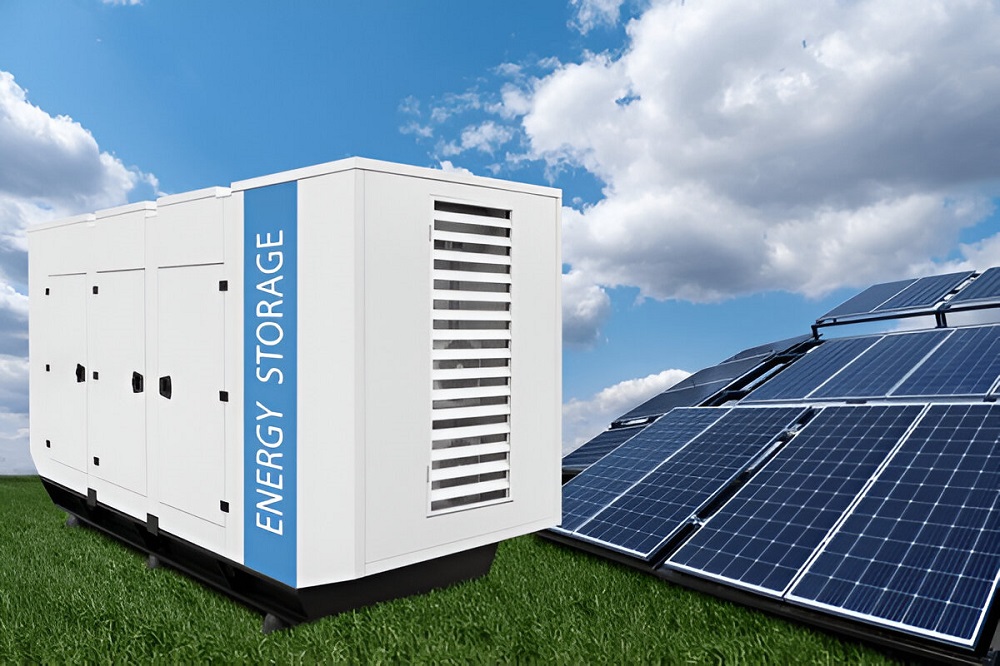As we navigate the 21st century, the urgency to combat climate change has never been more pressing. The growing evidence of climate impacts, from rising global temperatures to more frequent and severe weather events, underscores the need for immediate action. One of the most promising avenues for addressing climate change is through technological innovation. In this blog, we will explore cutting-edge technologies that are being developed and implemented to mitigate the effects of climate change and pave the way for a sustainable future.
Renewable Energy Technologies
Solar Power
Solar power is one of the most widely adopted renewable energy sources. Advances in photovoltaic (PV) technology have made solar panels more efficient and affordable. Innovations such as perovskite solar cells and bifacial solar panels are pushing the boundaries of solar energy capture and efficiency.
Renewable Energy Technologies

Renewable energy is at the forefront of the battle against climate change. By harnessing natural resources like the sun, wind, and water, renewable energy technologies provide clean and sustainable alternatives to fossil fuels.
Solar Power Innovations:
- Perovskite Solar Cells: These cells offer high efficiency at a lower cost compared to traditional silicon-based cells. They can be manufactured using simpler processes, making them more accessible.
- Bifacial Solar Panels: These panels capture sunlight from both sides, increasing energy output without requiring additional space.
Wind Energy
Wind energy is another crucial component of the renewable energy mix. Modern wind turbines are more efficient and can generate electricity even at lower wind speeds. Offshore wind farms, which harness stronger and more consistent winds over the ocean, are gaining traction as a significant energy source.
Wind Energy Innovations:
- Floating Wind Turbines: These turbines can be placed in deeper waters where traditional fixed-bottom turbines are not feasible, expanding the potential for offshore wind energy.
- Vertical Axis Wind Turbines (VAWTs): Unlike traditional horizontal axis turbines, VAWTs can capture wind from any direction, making them suitable for urban environments.
Energy Storage Solutions
One of the challenges with renewable energy sources is their intermittent nature. Energy storage technologies are essential for ensuring a stable and reliable supply of renewable energy.

Battery Storage
Battery storage systems store excess energy generated by renewable sources for use when production is low. Advances in battery technology are improving storage capacity, efficiency, and lifespan.
Battery Storage Innovations:
- Lithium-Ion Batteries: The most common type of battery storage, with ongoing improvements in energy density and cost reduction.
- Solid-State Batteries: These batteries offer higher energy density and improved safety compared to traditional lithium-ion batteries.
Grid-Scale Storage
Grid-scale storage solutions are critical for integrating large amounts of renewable energy into the power grid. These systems provide backup power and help balance supply and demand.
Grid-Scale Storage Innovations:
- Pumped Hydro Storage: Uses excess energy to pump water to a higher elevation, which can then be released to generate electricity when needed.
- Compressed Air Energy Storage (CAES): Stores energy by compressing air in underground caverns and releasing it to generate electricity.
Carbon Capture and Storage (CCS)
Carbon capture and storage (CCS) technologies capture carbon dioxide (CO2) emissions from industrial processes and power plants, preventing them from entering the atmosphere. The captured CO2 is then stored underground or repurposed for industrial use.
Direct Air Capture
Direct air capture (DAC) involves extracting CO2 directly from the atmosphere. This technology has the potential to reduce atmospheric CO2 levels and mitigate climate change.
Direct Air Capture Innovations:
- Climeworks: A leading company in DAC technology, with facilities that capture CO2 from the air and store it underground or convert it into useful products.
- Carbon Engineering: Develops DAC systems that capture CO2 for use in synthetic fuels and other applications.
Utilization of Captured CO2
Captured CO2 can be repurposed for various industrial applications, reducing the need for new raw materials and lowering overall emissions.
CO2 Utilization Innovations:
- CarbonCure: Injects captured CO2 into concrete during the manufacturing process, improving the material’s strength and reducing its carbon footprint.
- Liquid Light: Converts captured CO2 into valuable chemicals, such as methanol and formic acid, for use in various industries.
Sustainable Agriculture and Food Production

Agriculture is both a contributor to and a victim of climate change. Innovative technologies are transforming food production to be more sustainable and resilient.
Precision Agriculture
Precision agriculture uses data and technology to optimize farming practices, reducing waste and improving efficiency.
Precision Agriculture Innovations:
- Drones: Monitor crop health, soil conditions, and water usage, allowing farmers to make data-driven decisions.
- IoT Sensors: Provide real-time data on soil moisture, temperature, and nutrient levels, enabling precise application of water and fertilizers.
Vertical Farming
Vertical farming involves growing crops in stacked layers or vertically inclined surfaces, often in controlled indoor environments. This method reduces the need for land and water while increasing crop yield.
Vertical Farming Innovations:
- Aeroponics: Grows plants without soil by misting their roots with nutrient-rich solutions, resulting in faster growth and higher yields.
- LED Grow Lights: Provide the optimal spectrum of light for photosynthesis, improving plant growth and energy efficiency.
Transportation Innovations
The transportation sector is a significant source of greenhouse gas emissions. Technological advancements are revolutionizing transportation to be more sustainable and efficient.
Electric Vehicles (EVs)
Electric vehicles (EVs) produce zero tailpipe emissions and are becoming increasingly popular as battery technology improves and charging infrastructure expands.
EV Innovations:
- Solid-State Batteries: Offer higher energy density and faster charging times compared to traditional lithium-ion batteries.
- Wireless Charging: Allows EVs to charge wirelessly while parked or even while driving, enhancing convenience and reducing range anxiety.
Public Transportation
Sustainable public transportation systems reduce the number of individual vehicles on the road, lowering emissions and easing traffic congestion.
Public Transportation Innovations:
- Electric Buses: Powered by electricity rather than diesel, reducing emissions and improving air quality.
- High-Speed Rail: Offers a low-emission alternative to air and car travel for long-distance journeys.
Circular Economy and Waste Management
The circular economy aims to minimize waste and make the most of resources by reusing, repairing, and recycling products and materials.
Recycling Technologies
Advancements in recycling technology are improving the efficiency and effectiveness of waste management processes.
Recycling Innovations:
- Chemical Recycling: Breaks down plastic waste into its chemical components, allowing it to be reused in new products.
- Smart Waste Bins: Equipped with sensors to detect the type and amount of waste, optimizing collection routes and reducing contamination.
Sustainable Packaging
Reducing the environmental impact of packaging is a key component of the circular economy. Sustainable packaging alternatives are being developed to replace single-use plastics.
Sustainable Packaging Innovations:
- Biodegradable Plastics: Made from renewable resources and designed to break down naturally in the environment.
- Edible Packaging: Created from food-grade materials, these packaging solutions can be safely consumed or composted.
Conclusion
Technological innovation is a powerful tool in the fight against climate change. From renewable energy and carbon capture to sustainable agriculture and circular economy practices, these advancements are driving us toward a greener and more sustainable future. By embracing and investing in these technologies, we can mitigate the impacts of climate change, reduce our carbon footprint, and create a resilient and thriving planet for generations to come.






